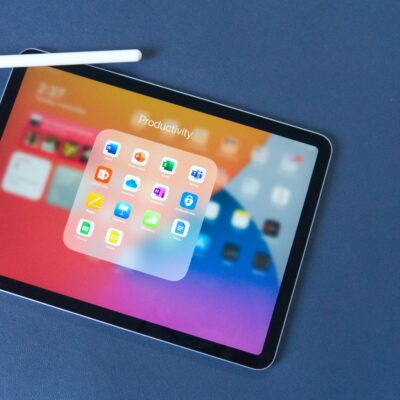Picture this: a time before tablets ruled the tech world, when bulky laptops and chunky PDAs were the norm. Fast forward to today, where sleek and powerful tablets have become an essential tool in our daily lives. Join us on a journey through the evolution of tablets, from their humble beginnings to their current status as must-have gadgets for work, play, and everything in between.
The Early Days: From Personal Digital Assistants (PDAs) to Tablets
Back in the early days of personal tech, Personal Digital Assistants (PDAs) were all the rage. These pocket-sized devices revolutionized how we managed our schedules and contacts on-the-go. Remember Palm Pilots and Pocket PCs? They paved the way for what was to come.
Then came the game-changer: tablets. With their larger screens and more advanced capabilities, tablets took the concept of PDAs to a whole new level. The launch of the iPad by Apple in 2010 marked a turning point in tech history, sparking a tablet boom that would transform the way we interact with technology forever.
No longer just tools for checking emails or browsing the web, tablets quickly evolved into versatile devices capable of handling everything from productivity tasks to entertainment needs. The transition from PDAs to tablets opened up a world of possibilities, setting the stage for an era where these sleek gadgets would become indispensable companions in our modern lives.
The Rise of the iPad and the Tablet Boom
The introduction of the iPad in 2010 revolutionized the tech industry, sparking a new era of tablet innovation. Its sleek design and user-friendly interface captured the hearts of consumers worldwide, setting off a tablet boom that continues to shape how we work and play.
Apple’s iPad wasn’t just a device; it was a symbol of status and sophistication. Other tech giants quickly followed suit, releasing their own versions of tablets with improved features and capabilities to meet growing demands.
With the rise of mobile apps and cloud computing, tablets became essential tools for staying connected on the go. From browsing the internet to streaming multimedia content, users found endless possibilities at their fingertips thanks to these portable devices.
The tablet boom didn’t just impact individual consumers – businesses also embraced tablets for enhanced productivity and communication. The versatility of tablets made them ideal for presentations, emails on-the-fly, or accessing important documents wherever you are.
As more industries incorporated tablets into their workflows, it became clear that these devices were here to stay. The rise of the iPad marked a turning point in how we interact with technology daily – shaping our habits and expectations for years to come.
Tablets in the Business World: Productivity and Convenience
In today’s fast-paced business world, tablets have become indispensable tools for professionals across industries. Their portability and versatility make them ideal for on-the-go productivity and convenience.
With the ability to access emails, documents, and presentations at the touch of a screen, tablets have revolutionized how businesses operate. Meetings are more dynamic with interactive presentations and real-time data sharing.
Many apps designed specifically for business use enhance organization, time management, and communication within teams. From project management to video conferencing, tablets streamline workflows and boost efficiency.
The convenience of having all necessary information at your fingertips in a lightweight device has made tablets essential for traveling executives or remote workers. Collaboration is seamless with cloud storage integration that allows access to files from anywhere.
Incorporating tablets into daily operations has not only increased productivity but also improved overall flexibility in adapting to changing work environments.
Entertainment on the Go: How Tablets Changed the Game
Imagine a time before tablets, where entertainment on the go meant carrying around bulky laptops or portable DVD players. The introduction of tablets revolutionized how we consume media while traveling.
With sleek designs and vibrant displays, tablets became the ultimate entertainment companions. Whether it’s watching movies during a long flight, playing games on a road trip, or reading e-books at the beach, tablets offer endless possibilities for entertainment wherever you are.
Streaming services like Netflix and Spotify have further enhanced the tablet experience by providing access to an extensive library of movies, TV shows, music, and podcasts right at your fingertips.
The portability and versatility of tablets have truly changed the game when it comes to staying entertained while on the move. Whether you’re commuting to work or waiting in line at the grocery store, having a tablet handy can turn any dull moment into an enjoyable one.
The Impact on Education
Tablets have revolutionized the way education is delivered, making learning more interactive and engaging for students of all ages. With access to a world of knowledge at their fingertips, learners can explore subjects in-depth and at their own pace.
Educational apps and e-books have made studying more dynamic, allowing for multimedia integration and personalized learning experiences. Teachers can now easily incorporate digital resources into their lesson plans, catering to different learning styles and keeping students motivated.
Collaborative tools on tablets facilitate group projects and communication among classmates, fostering teamwork skills that are essential in today’s interconnected world. Additionally, the portability of tablets enables learning beyond the confines of traditional classrooms, encouraging continuous education in diverse environments.
Tablets have become indispensable tools in modern education by enhancing accessibility, interactivity, and flexibility in the learning process.
Challenges and Competition in the Tablet Market
As tablets became more popular, competition in the market intensified. Established tech giants and emerging brands alike vied for a piece of the pie, constantly innovating to stay ahead. One key challenge was differentiating their products from the sea of options available to consumers.
Price wars erupted as companies sought to offer affordable options without compromising on quality. Features like display resolution, processing power, and battery life became battlegrounds for manufacturers striving to outdo each other.
Moreover, with smartphones becoming larger and more powerful, some questioned the necessity of owning a tablet. This shift in consumer behavior posed a threat to traditional tablet sales while pushing companies to adapt their strategies.
In addition, new players entering the market added another layer of complexity. With diverse offerings catering to various niches, competitors had to find ways to stand out amidst the noise and capture their target audience’s attention.
The Future of Tablets: Advancements and Possibilities
As we look ahead to the future of tablets, it’s clear that these devices will continue to evolve and innovate. Advancements in technology such as foldable screens, improved processing power, enhanced battery life, and 5G connectivity will shape the next generation of tablets. The possibilities are endless, from seamless integration with other smart devices to AI-driven personal assistants tailored to individual users.
With the rapid pace of technological development, we can expect tablets to become even more versatile tools for work, entertainment, communication, education, and beyond. As they become increasingly powerful and intuitive, tablets are poised to remain essential gadgets in our daily lives.
So whether you’re a business professional looking for enhanced productivity tools or a student seeking interactive learning experiences, the evolution of tablets promises exciting opportunities for everyone. Stay tuned for what lies ahead in this ever-changing landscape of technology!






